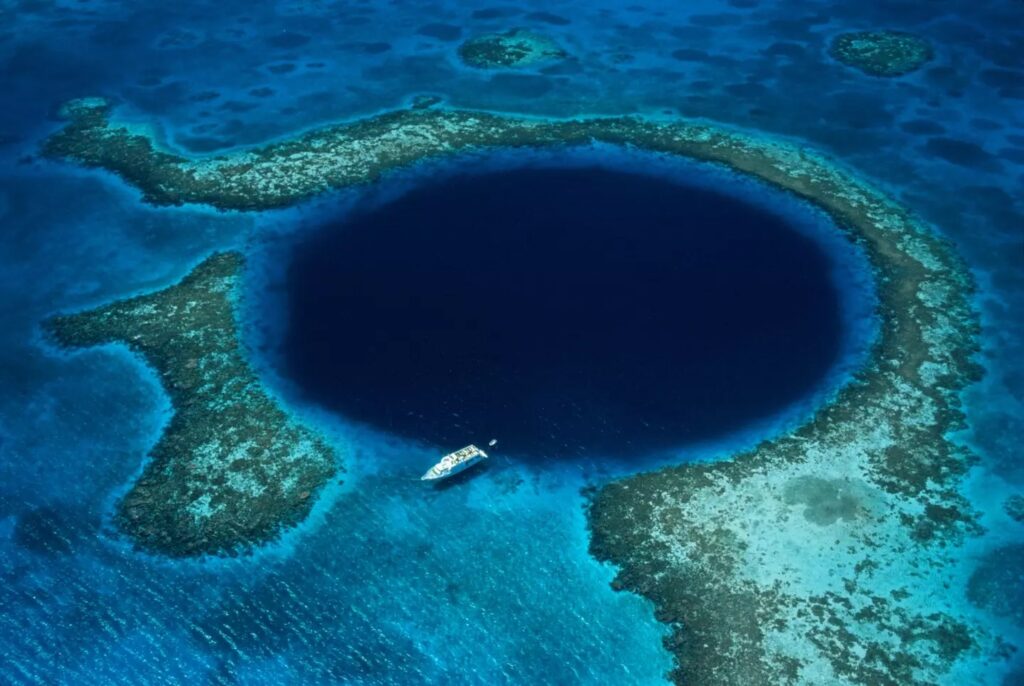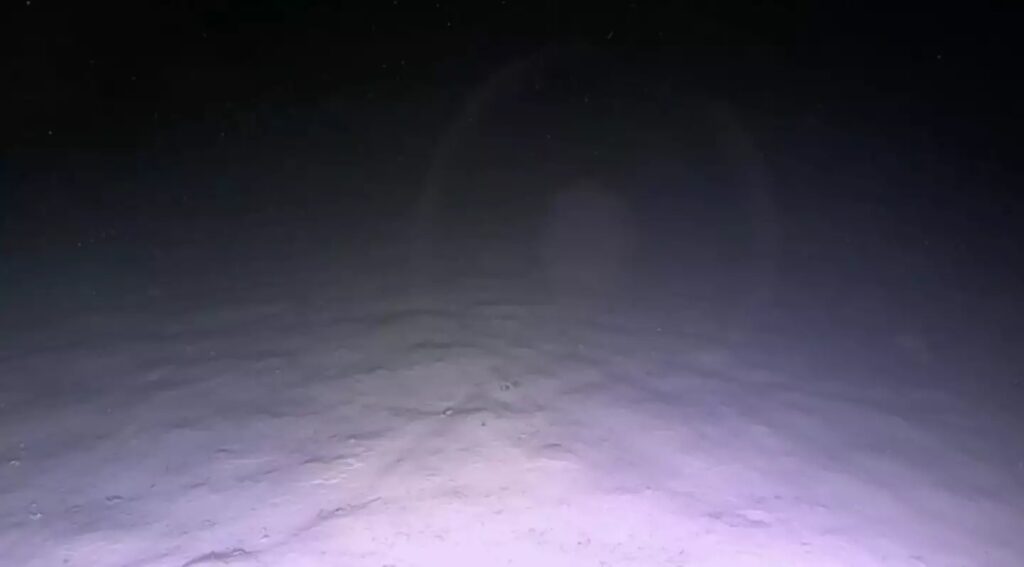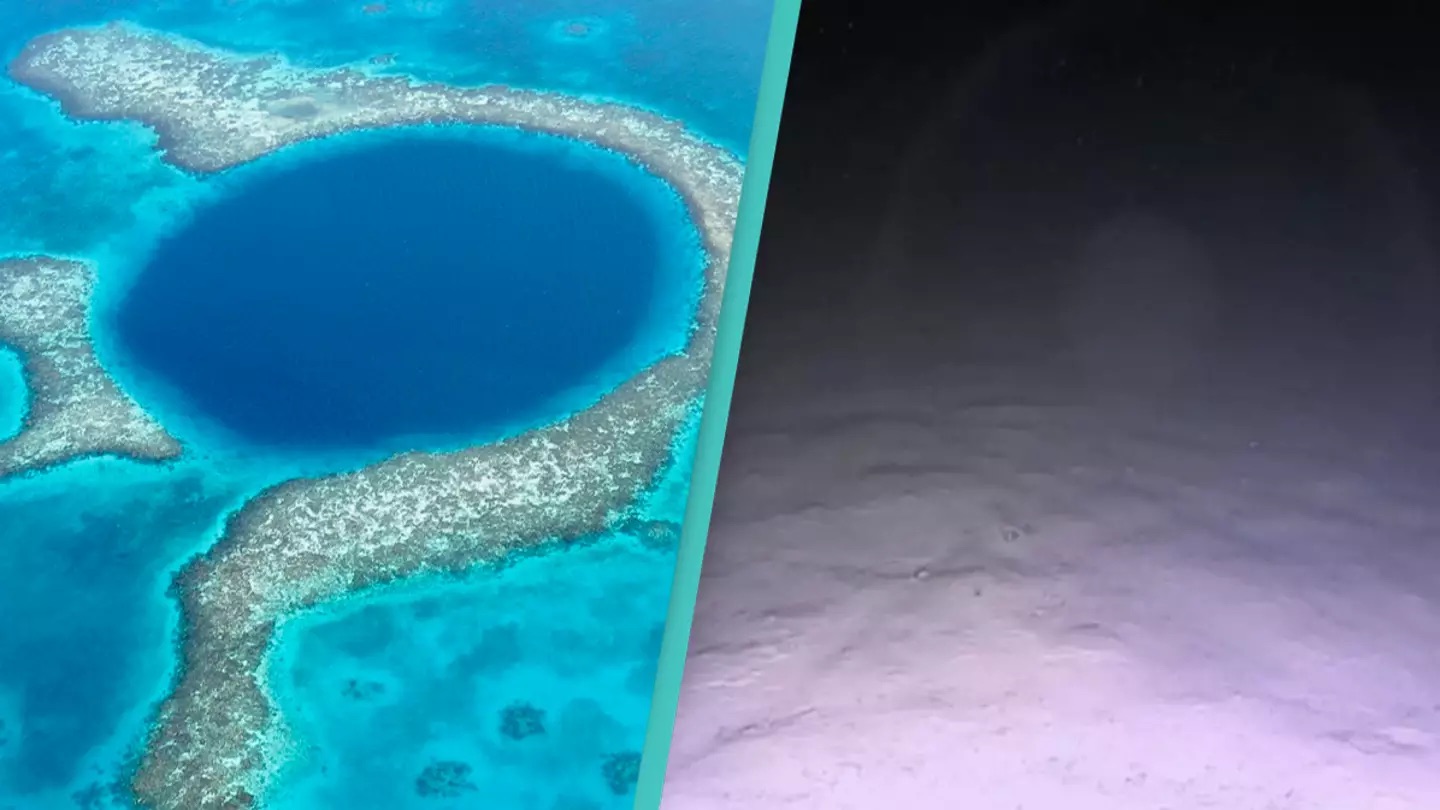While exploring the depths of the Great Blue Hole, divers uncovered a disturbing find. The Great Blue Hole is a renowned natural formation, often described as a “seamark” due to its striking color contrast, which stirs curiosity about what lies beneath.
The sinkhole has long intrigued divers and researchers, and in 2018, an unsettling discovery led them to inform the Belize government.
Located in Belize, the Great Blue Hole is one of the world’s largest marine sinkholes, measuring about 300 meters (984 feet) across and 125 meters (410 feet) deep. Though not as deep as some oceanic areas, it’s still beyond the reach of recreational scuba divers, whose maximum depth is around 30 meters.

In 2018, Richard Branson and a team from Aquatica Submarines ventured to the sinkhole’s bottom. Despite life thriving in much deeper ocean regions, they found that below 90 meters, life forms began to disappear due to a toxic layer of hydrogen sulfide, which blocks oxygen from reaching the lowest depths. Expedition member Erika Bergman explained that they found conch shells and hermit crabs that had fallen into the hole and suffocated.
At the bottom of the sinkhole, the team made a grim discovery: the remains of two divers who had gotten lost on a previous dive. Bergman explained, “We respectfully informed the Belize government and agreed not to attempt a recovery. It’s dark and peaceful down there, so we decided to let them rest.”

The team also found signs of human activity, including a two-liter soda bottle at the sinkhole’s bottom. Unfortunately, this is not unique, as trash has also been found in the Mariana Trench, the deepest point on Earth.
